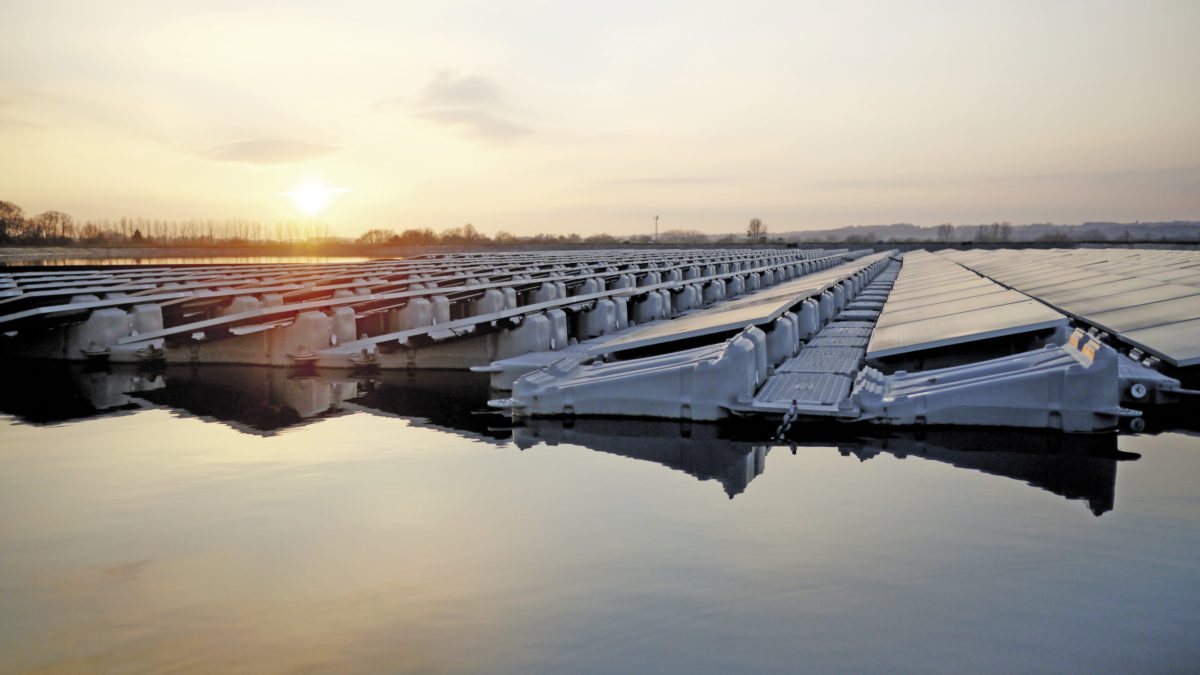Scientists from Italy’s University of Naples Federico II and India’s M Kumarasamy College of Engineering have recommended thin-film solar module technology for offshore floating PV projects.
The researchers said lightweight thin-film panels are better suited to projects with complex logistical requirements than conventional crystalline silicon alternatives, which must be mounted on pontoons and require aluminum frames and structures to resist saltwater corrosion.
The fact thin-film modules would be in direct contact with water, rather than being pontoon-mounted, offers cooling and cleaning benefits, according to the researchers, who say the logistics advantages also make thin-film technology better suited to land-based projects in remote locations.
Polymer laminate
A thin-film floating PV system could feature a single scalable array of panels linked by connectors, either in series or parallel, based on project capacity. Floating thin-film panels are usually laminated with a highly transparent waterproof polymer. Air pockets and ducts are embedded in panels during the lamination process to reduce rigidity and increase buoyancy.
Such arrays could be ideal solutions for offshore projects, said the researchers, which can be subject to strong winds and high waves.
“Analyses based on … flexural rigidity [bend strength] have proved that … thin-film-technology-based FPV [floating PV] on offshore [projects] will tend to have low wave energy interaction,” stated the Indo-Italian group in the paper, Floating Photovoltaic Thin Film Technology—A Review, published in Intelligent Manufacturing and Energy Sustainability.
The researchers said the hydrodynamic properties of thin-film panels can reduce mechanical stress on mooring systems. That means less infrastructure so project logistics are simpler than for crystalline silicon panels.
The researchers reviewed thin-film technologies which could be adopted for floating PV, including amorphous silicon (a-Si); cadmium telluride (CdTe); copper, indium, gallium and selenium (CIGS); and gallium arsenide (GaAs) products.
This article was extensively revised on 27/02/20 in response to feedback from the pv magazine community, below.
This content is protected by copyright and may not be reused. If you want to cooperate with us and would like to reuse some of our content, please contact: editors@pv-magazine.com.




What’s the idea here? The thin-film sheets will basically float directly on the sea surface? How about the connectors?
Ocean PV pioneers are brave people. Wave energy has a 60-year history of defeat by the nightmare environment of the sea surface, with salt, water, and oxygen continually stirred up by the wind into a perfect corrosion soup as by a mixer. Fully underwater (tidal stream) is fine, fully aloft (wind turbines) is fine, or at least manageable..
Why not solar coated offshore Wind Turbines to exploit the REFLECTIVE Properties of water also for Desalination etc ?
Cheers Jeff M. Weeks Researcher
WMaxJeff@gmail.com
It seems to me a strange and inaccurate article. Most thin film PV panels are also rigid and glass based. On the other hand crystalline Silicon panels can also be made on a flexible foil. So why do the authors refer to the choice of PV technology while actually they seem to mean the choice of module embodiment?
Hi Wiep,
Thanks for coming back to us on this. Our reporter has faithfully reproduced a summary of the findings of the study but we take allegations of inaccuracy very seriously here at pv magazine so please let us know of any findings you feel our reporter has inaccurately reproduced from the research in question. It appears, though, your criticism may be of the research itself, in which case I would point you to the researchers.
Sorry gents, I can’t find the clue of this story.
Hi Jaap, I fear your criticism is justified and the article has had an extensive second edit to hopefully more clearly convey the findings of the research.